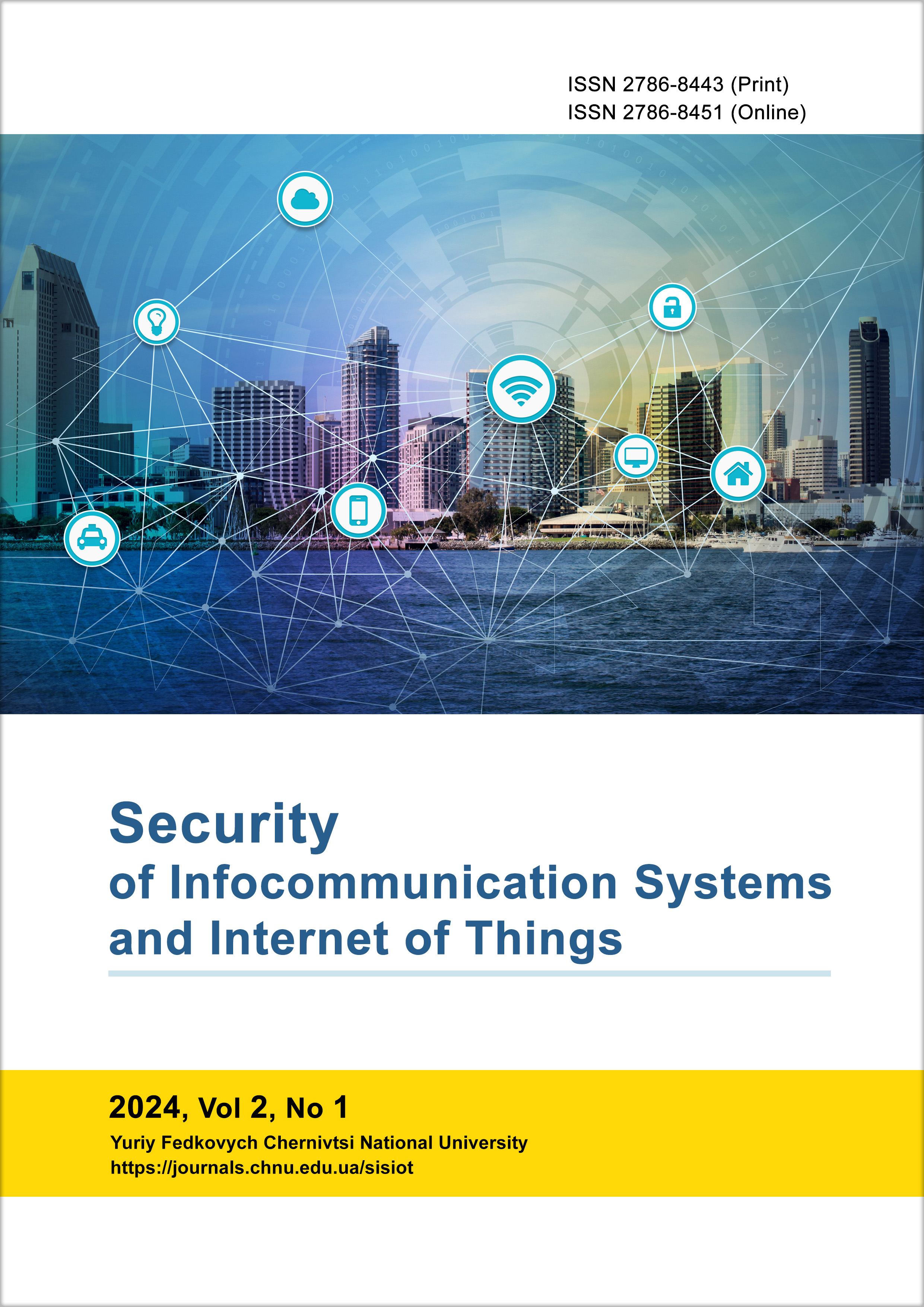Analysis of Results of Scaling Digital Images by Interpolation Algorithms
DOI:
https://doi.org/10.31861/sisiot2024.1.01007Keywords:
scaling of digital images, nearest neighbor algorithm, bilinear Interpolation, bicubic interpolation, Lanczos algorithmAbstract
Scaling of digital bitmap images is often used in modern computer and telecommunications systems. Among image scaling algorithms, the most common are interpolation algorithms, namely nearest neighbor, Lanczos, bilinear and bicubic interpolations. However, in the process of scaling images by interpolation algorithms, characteristic distortions appear on them. Therefore, in this work, software implementation and research of image interpolation algorithms was performed in order to identify their advantages and disadvantages, areas of use and ways of improvement. In order to study the interpolation algorithms, a scaled fRGBs image was calculated based on the initial image fRGB, and then a scaled image fRGBs2 with the dimensions of the original image was calculated based on fRGBs. The scaling accuracy is evaluated using the Root Mean Square Error between the pixel values of the original and scaled images. The software for scaling images is developed in the Python language. Calculation of scaled images is performed by the cv2.resize() function of the OpenCV library. Using the developed program, scaling of a series of 100 images was carried out, the accuracy and speed of digital image scaling by interpolation algorithms were investigated. For each interpolation method, the average scaling error AR and the limits of its confidence interval ARmin and ARmax with a specified reliability γ are calculated. The average scaling time AT of a series of 100 images by different algorithms was determined. The research results showed that in most cases the smallest scaling error is provided by the bicubic interpolation algorithm, which is slightly inferior in speed to the nearest neighbor and bilinear interpolation algorithms. Recommendations for the application of interpolation algorithms have been developed. It is shown that the use of convolutional neural networks is promising for the highest quality image scaling.
Downloads
References
R. Gonzalez and R. Woods, Digital Image Processing, 4th ed. Pearson/Prentice Hall, NY, 2018.
S. Palani, Principles of Digital Signal Processing. Springer Cham, 2022.
D. E. Kim and D. Hwang, Eds., Intelligent Imaging and Analysis. MDPI, Basel, Switzerland, 2020.
S. Balovsyak, V. Lacusta, and K. Odaiska, "Reading of Sensor Signals with Automatic Selection of Sampling Frequency," Security of Infocommunication Systems and Internet of Things, vol. 1, no. 1, paper 01010, pp. 1-4, 2023. doi: 10.31861/sisiot2023.1.01010.
D. Suresha and H. N. Prakash, "Data Content Weighing for Subjective versus Objective Picture Quality Assessment of Natural Pictures," Int. Journal of Image, Graphics and Signal Processing (IJIGSP), vol. 9, no. 2, pp. 27-36, 2017.
G. Liu, "The Novel Bilateral Quadratic Interpolation Image Super-resolution Algorithm," International Journal of Image, Graphics and Signal Processing (IJIGSP), vol. 13, no. 3, pp. 55-61, 2021. doi: 10.5815/ijigsp.2021.03.05.
P. Prystavka and O. Cholyshkina, "Pyramid Image and Resize Based on Spline Model," International Journal of Image, Graphics and Signal Processing (IJIGSP), vol. 14, no. 1, pp. 1-14, 2022. doi: 10.5815/ijigsp.2022.01.01.
S. Balovsyak, I. Fodchuk, K. Odaiska, Yu. Roman, and E. Zaitseva, "Analysis of X-Ray Moiré Images Using Artificial Neural Networks," in IntelITSIS 2022: 3rd Int. Workshop on Intelligent Information Technologies and Systems of Information Security, March 23–25, 2022, Khmelnytskyi, Ukraine, CEUR Workshop Proceedings, pp. 187-197, 2022.
Waifu2x [Online]. Available: https://waifu2x.udp.jp/index.uk.html.
O. Knill, Probability and Stochastic Processes with Applications. Overseas Press (India), Pvt. Ltd, 2009.
D. W. Scott, "Sturges' Rule," WIREs: Computational Statistics, vol. 1, no. 3, pp. 303-306, 2009.
C. Fowlkes, D. Martin, and J. Malik, "Local Figure/Ground Cues are Valid for Natural Images," Journal of Vision, vol. 7, no. 8, pp. 1-9, 2007.
The Berkeley Segmentation Dataset and Benchmark, BSDS300 [Online]. Available: https://www.eecs.berkeley.edu/Research/Projects/CS/vision/bsds.
A. Geron, Hands-On Machine Learning with Scikit-Learn, Keras, and TensorFlow. O'Reilly Media, Inc., 2019.
Published
Issue
Section
License
Copyright (c) 2024 Security of Infocommunication Systems and Internet of Things

This work is licensed under a Creative Commons Attribution 4.0 International License.









